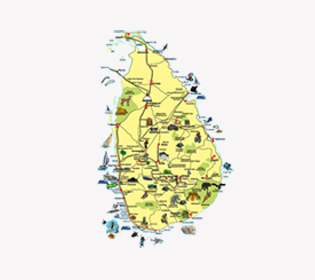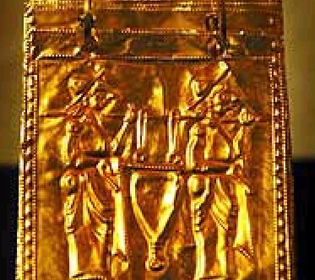
Rice & Curry is the main food of Sri Lanka and Sri Lankans enjoy some of the spiciest foods in the world. Meat, fish and vegetables are prepared as curries. Sliced onions, green chilies, black pepper, cinnamon, cardamom, cloves, nutmeg and saffron are used to add flavors. Today, rice and curry has shifted from being the popular breakfast to the essential lunch.
A basic rice and curry requires one fish (or beef or chicken) curry, two different vegetables, one portion of fried crispy stuff like papadam, a mallum of chopped leaves and coconut, and a gravy or hodda of spiced and cooked with coconut milk.
The rice is always put on to the plate first and then the curries are selected from the other dishes to mix with it so you have a collection of minor meals around the plate. You eat by mixing the rice with something forming it in to a bite-sized ball and consuming by hand.
There is vast range of flavors and different curry mixes used for different foods. There are regional differences too. even with the same base food the taste will completely be different.

In Sri Lanka probably the most popular type of roti is "Pol Roti" (coconut roti). It's made of wheat flour, kurakkan flour or a mixture of both and scraped coconut. Sometimes chopped green chillies and onion are added to the mixture before cooking. These are usually thicker and harder than other roti types. They are usually eaten with curries, or some types of sambol or "lunu miris" and considered a main meal rather than a supplement.

String hoppers are made from a hot-water dough of rice-meal pressed out in circlets from a string mould on to little wicker mats, then steamed. Light and lacy, string hoppers make a mouthwatering meal with curry and sambol.

Kiribath is a ceremonial specific and included in all special occasion menus .kiribath is translated in to milk rice". The rice is cooked in thick coconut cream for this un sweetened rice-pudding which is accompanied by a sharp chilli relish called Lunumiris or with a tackey coconut and treacle confection called Panipol.

The Tamils of Sri Lanka who mainly live in the northern and eastern parts of the island have preserved some of their distinctive ethnic breakfast foods. Thosai is a great favorite among many Sri Lankans, it is delicious and nutritionally rich. The base for this lentil pancake is oorid,
(Mungoradiatys), A back-skinned pulse of delicate flavor which is soaked and ground to a smooth batter. is then allowed to rise, flavored with fried shallots, curry leaves, fenugreek and cumin and cooked on a hot griddle greased with sesame oil. Thosai which resembles a tortilla, is eaten with a finely ground coconut and chilly sanbal and is a delicious and satisfying meal.

Hoppers are much like sour-dough pancakes or muffins. The batter is fermented in the traditional way with a little palm toddy, which gives the hoppers a delicious liquor tang. The batter is left to rise overnight, then thinned with coconut cream and baked in a round cast-iron pan. The hopper has a soft, fluffy, well-risen center, a golden brown crisp border and is lightly flavored with a hint of palm toddy and sesame oil with which the pan is greased. An egg is sometimes baked into the center, sunny-side up. Hoppers are equally good with hot sambals a hot sharp 'relish' of ground chilies, grated coconut's shallots & cured fish or curries or with jam-the one rule is to eat them hot.

Pittu probably came to Sri Lanka with the Malay regiments of the Eruption colonial period. It is however completely naturalized now and is a staple of Sri Lankan cuisine. Pittu is a mixture of fresh rice meal, every lightly roasted and mixed with fresh grated coconut, then steamed in a bamboo mould. It has a soft crumbly texture and is eaten with fresh coconut 'milk' and a hot chilli relish or curry.



